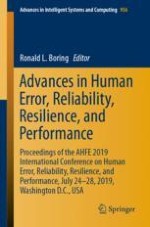
2020 | OriginalPaper | Chapter
Investigating Collective Mindfulness in Mining: A Prospective Study in High-Reliability Organizations
Authors : Manikam Pillay, Michael Tuck, Karen Klockner
Published in: Advances in Human Error, Reliability, Resilience, and Performance
Publisher: Springer International Publishing
Activate our intelligent search to find suitable subject content or patents.
Select sections of text to find matching patents with Artificial Intelligence. powered by
Select sections of text to find additional relevant content using AI-assisted search. powered by